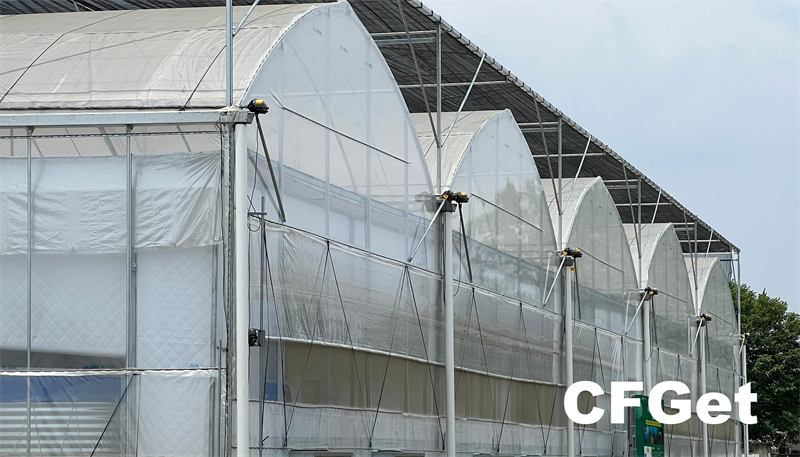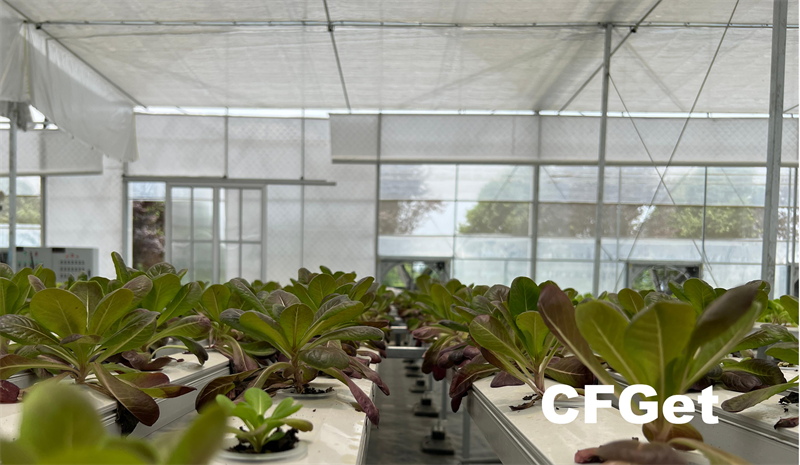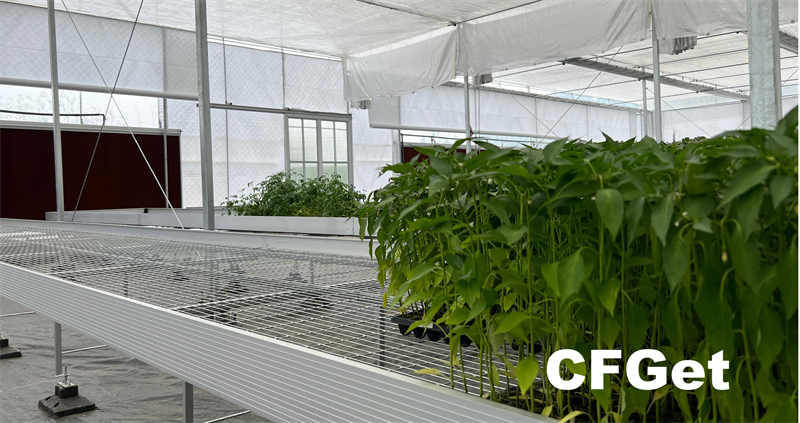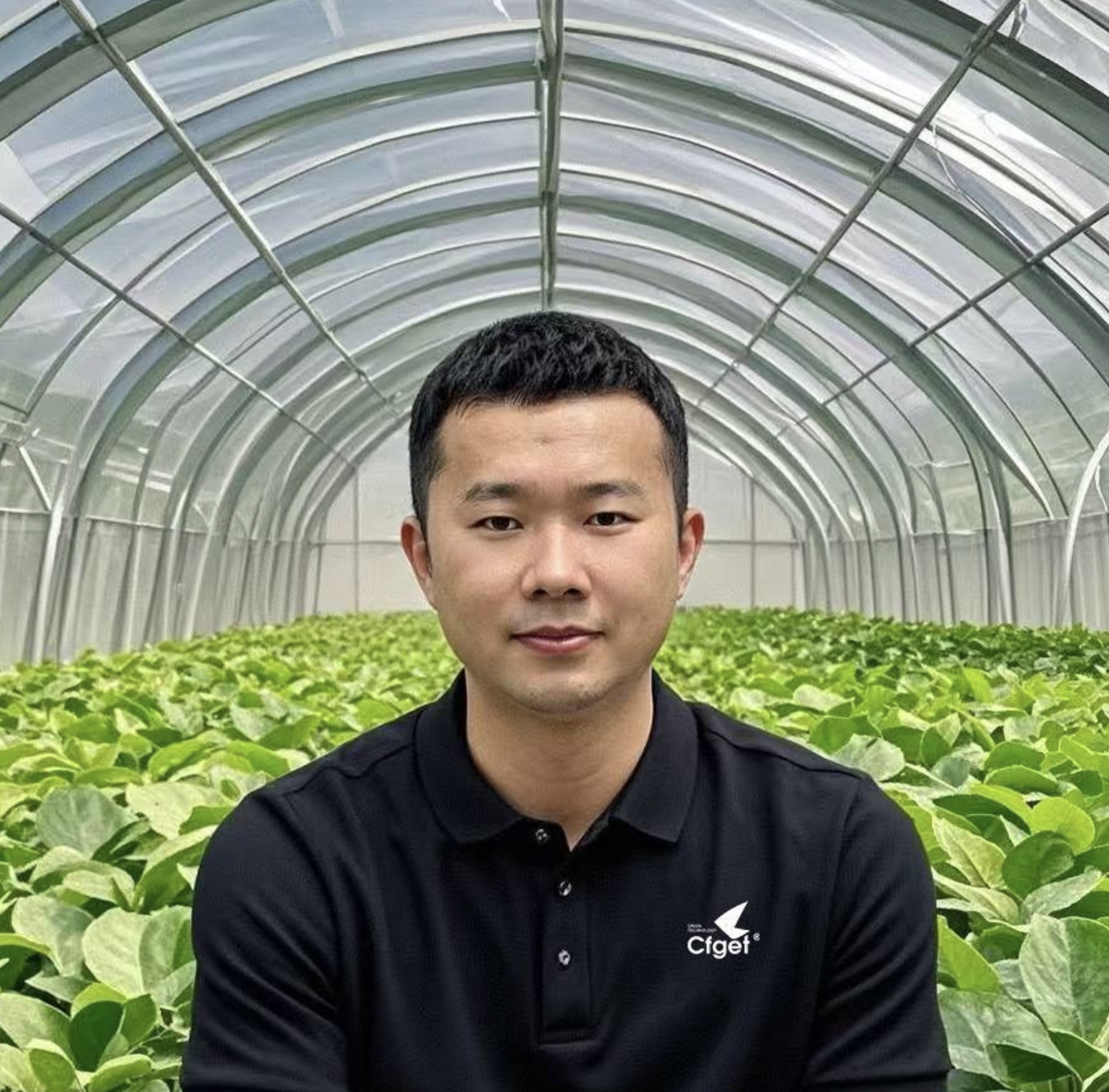Ua lilo ka ʻenehana hoʻomalu i ke ea o Greenhouse i mea nui o ka mahiʻai hou. Ma ka hoʻololi ʻana i ka mahana, ka haʻahaʻa, ka māmā, a me ka ea, hiki ke hoʻonui nui i ka hua a me ka maikaʻi o nā mea kanu. Ma waho aʻe o nā kūlana aniau, hāʻawi kahi hale ʻōmaʻomaʻo i kahi kūlana paʻa no ka ulu ʻana o nā mea kanu, hāʻawi i ka poʻe mahiʻai i ka pōmaikaʻi nui i ka hana ʻana i nā mea kanu. Akā, pehea e pili ai ka ʻenehana hoʻomalu i ke aniau i ka ulu ʻana o ka mea kanu? E nānā pono kākou.

1. Ka Ho'omalu 'ana i ka Mahana: Ho'okumu 'ana i ka "Zone Hō'olu'olu" no na mea kanu
ʻO ka mahana kekahi o nā kumu koʻikoʻi i ka ulu ʻana o nā mea kanu. Loaʻa i kēlā me kēia mea kanu nā koi wela kikoʻī, a ʻo nā mahana kiʻekiʻe a haʻahaʻa paha hiki ke hoʻopilikia i ka ulu ʻana o nā mea kanu. Hoʻohana nā hale ʻōmaʻomaʻo i nā ʻōnaehana mālama wela e hōʻoia i ka noho ʻana o nā mea kanu i loko o ka pae wela kūpono no ka ulu olakino.
Hoʻolako ʻia nā hale ʻōmaʻomaʻo me nā ʻōnaehana hoʻokele ea e hoʻoponopono ʻokoʻa i ka hoʻomehana ʻana, ka hoʻoluʻu, a me ka ea. No ka laʻana, i nā kau anu, hoʻāla ka ʻōnaehana i nā mea hoʻomehana e mālama i ka mahana i makemake ʻia i loko o ka hale ʻōmaʻomaʻo. I ke kauwela, hana nā ʻōnaehana ventila a me nā ʻupena malu e hoʻemi i ka mahana, pale i ka wela.
Nā hale ʻōmaʻomaʻo ʻo Chengfeihāʻawi i nā hāʻina hoʻomalu wela kiʻekiʻe e kōkua i ka hoʻonui ʻana i ke kaiapuni o loko o nā hale ʻōmaʻomaʻo, e hōʻoia i ka ulu wikiwiki ʻana o nā mea kanu i nā kūlana wela kūpono.

2. Hoʻomalu i ka haʻahaʻa: mālama i nā pae wai kūpono
He mea nui ka haʻahaʻa i ka ulu ʻana o nā mea kanu. Hiki i ka ha'aha'a ha'aha'a ke kaumaha i nā mea kanu. Hiki i ka haʻahaʻa haʻahaʻa ke hoʻoikaika i ka ulu ʻana o ka palaka a me ka ulu ʻana o ka fungal, ʻoiai hiki i ka haʻahaʻa haʻahaʻa ke kumu i ka maloʻo a me ka ulu lohi. ʻO ka mālama ʻana i ke kaulike kūpono ke kī i ka hoʻoikaika ʻana i ke olakino mea kanu.
Hoʻohana maʻamau nā hale ʻōmaʻomaʻo i nā humidifiers a i ʻole dehumidifiers e hoʻoponopono i nā pae haʻahaʻa. Kōkua kēia mau ʻōnaehana e hōʻoia i ka noho ʻana o ka ea i loko o ka hale ʻōmaʻomaʻo i kahi pae maʻemaʻe maikaʻi loa, e pale ana i nā pilikia e like me ka mold a me ka dehydration. Ma ka mālama pono ʻana i ka haʻahaʻa haʻahaʻa, hiki i nā mea kanu ke hoʻomoʻi i ka wai me ka maikaʻi a ulu i ka wikiwiki paʻa.
3. Mana Māmā: E hōʻoia i ka lawa o ka mālamalama no ka Photosynthesis
Pono ka malamalama no ka photosynthesis, ke kaʻina hana e hoʻololi ai nā mea kanu i ka lā i ikehu. I loko o ka hale ʻōmaʻomaʻo, hiki ke mālama pono ʻia ka māmā a me ka lōʻihi e hoʻonui i ka ulu ʻana o ka mea kanu. Hiki i ke kukui lawa ʻole ke alakaʻi i nā mea kanu nāwaliwali, ʻoiai ʻo ka nui o ka mālamalama hiki ke hoʻoulu i ke kaumaha wela.
No ka hoʻomaluʻana i ka mālamalama, hoʻohana nā greenhouses i ka hui pūʻana o ke kukui kūlohelohe a me ke kukui. Hiki ke hoʻohana ʻia nā ʻupena malu no ka hoʻohaʻahaʻa ʻana i ka ikaika o ka lā i nā hola kiʻekiʻe, ʻoiai ke hoʻohana ʻia nā kukui hoʻohui i ka lawa ʻole o ka mālamalama maoli, e like me ka hoʻoilo a i nā lā ao. Mālama kēia i ka loaʻa ʻana o nā mea kanu i ka nui o ka mālamalama no ka photosynthesis maikaʻi loa, e hāpai ana i ka ulu olakino a wikiwiki.

4. Ea a me ka ea: e hōʻoia i ka holo pono o ka ea
He mea koʻikoʻi ka holo ʻana o ka ea kūpono no ka mālama ʻana i kahi ʻōmaʻomaʻo olakino. ʻO ka maikaʻi ʻole o ke kahe ʻana o ka ea hiki ke alakaʻi i ka ea paʻa, ka haʻahaʻa kiʻekiʻe, a me ke kūkulu ʻana o ka carbon dioxide, ʻo ia mau mea āpau e hiki ke keʻakeʻa i ka ulu ʻana o nā mea kanu a hoʻonui i ka pilikia o ka maʻi.
Hoʻolako ʻia nā hale ʻōmaʻomaʻo me nā ʻōnaehana ventilation like ʻole, e like me nā puka makani otometi a me nā pā ʻaoʻao, e hōʻoia i ka hoʻomau ʻana o ka ea. Kōkua kēia mau ʻōnaehana i ka hoʻoponopono ʻana i ka pae wela, ka haʻahaʻa, a me nā pae kalapona kalapona, e hana ana i kahi e ulu ai nā mea kanu. ʻO ka hoʻokuʻu ʻana maikaʻi e kōkua pū i ka pale ʻana i nā kinoea ʻino, e like me ka ethylene, hiki ke hōʻino i nā mea kanu maʻalahi.
Ua hoʻololi nā ʻenehana hoʻomalu ea ʻōmaʻomaʻo i ke ʻano o kā mākou ulu ʻana i nā mea kanu. Ma ka hāʻawi ʻana i ka mana pololei o ka mahana, ka haʻahaʻa, ka māmā, a me ka ea, ʻae kēia mau ʻōnaehana i ka poʻe mahiʻai e hana i kahi kūlana kūpono no ka ulu ʻana o nā mea kanu. Ke hoʻomau nei ka hoʻomaikaʻi ʻana o ka ʻenehana, e ʻoi aku ka maikaʻi o nā hale ʻōmaʻomaʻo a hiki ke kākoʻo i nā ʻano mea kanu like ʻole, e hāʻawi ana i ka palekana meaʻai honua.
Welina mai e kūkākūkā hou me mākou.
Email: info@cfgreenhouse.com
l #greenhouseclimatecontrol
l #emperaturecontrolsystems
l #humiditycontrol
l #lightregulation
l # ʻōnaehana makani ʻōmaʻomaʻo,
l #smartagriculturesolutions
Ka manawa hoʻouna: Dec-18-2024







 Kaomi iā Chat
Kaomi iā Chat